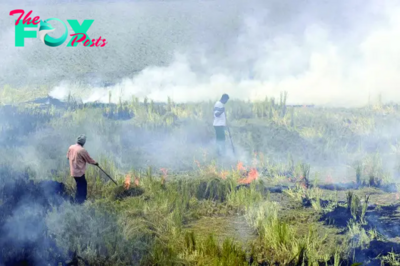Technology
Using research to solve societal problems starts with building connections and making space for young people
Often, when scientists do research around a specific societal challenge, they hope their work will help solve that larger problem. Yet translating findings into long-lasting, community-driven solutions is much harder than most expect.
It seems intuitive that scientists studying living organisms, microbes and ecosystems could apply their findings to tackle food shortages, help keep environments healthy and improve human and animal health. But it’s not always that easy. Issues like climate change, renewable energy, public health and migration are complex, making direct solutions challenging to develop and implement.
As a group of researchers invested in helping scientists create meaningful impact with their work, we understand problems like these will need experts from different fields and industries to work together.
This means we might need to reevaluate certain aspects of the inquiry process and embrace fresh perspectives if we, as members of the scientific community, want to improve our capacity for producing solutions-oriented research.
Defining use-inspired research
Science does not occur in a vacuum. Factors including funding availability, access to advanced technologies and political or social contexts can influence the kinds of studies that get done. A framework called use-inspired research and engagement, or UIRE, acknowledges this fact.
In use-inspired research, the potential applications of findings for society shape the directions of exploration.
In UIRE, researchers work with members of a community to figure out what questions they should look into. They form partnerships with other stakeholders, including governments, businesses of all scales and nonprofits, to form a collaborative foundation. This way, researchers can tailor investigations from the outset to be useful to and usable by decision-makers.
Translational research, or intentionally grounding scientific exploration in practical applications, isn’t new. Use-inspired research expands on translational research, prioritizing building connections between practitioners and communities.
In the U.S., the passage of the CHIPS and Science Act in 2022 further codified use-inspired research. The act directed US$280 billion over the next 10 years toward funding scientific inquiry to boost domestic competitiveness, innovation and national security.
This legislation also authorized the establishment of the National Science Foundation’s Directorate for Technology, Innovation and Partnerships, called NSF TIP. TIP marks the agency’s first new directorate in over three decades, created with the aim of sparking the growth of diverse innovation and technology landscapes.
Producing science in partnership
In use-inspired research and engagement, collaboration is a big part of each project from the start, when the researchers are first deciding what to study. These cooperative partnerships continue throughout data collection and analysis. Together, these teams apply the results and develop products, implement behavior changes, or further inform community decision-making.
For example, a large hospital, an academic organization and several nonprofits may partner together to explore issues affecting health care accessibility in the region. Researchers collect data through surveys and interviews, and interpret the findings within the community’s specific circumstances. They can then coordinate data evaluation with the health care and nonprofit partners, which helps take socioeconomic status, cultural beliefs and built infrastructure like grocery stores and public transportation into account.

This approach brings together the broad perspectives of a large hospital network, academic expertise around survey creation and data analysis, and specialized knowledge held by nonprofits. These groups can then collaborate further to develop specific programs, such as Educational initiatives and enhanced Health care services. They can tailor these to the needs of the community they serve.
Use-inspired research matters because it looks at all the different issues facing a community holistically and keeps them in mind when investigating potential solutions. UIRE is not a substitute for basic, foundational research, which explores new questions to fundamentally understand a topic. Rather, it’s an approach centered around selecting questions and developing methods based on real-world importance.
UIRE creates a foundation for long-term, inclusive partnerships – and not just within academia. Government, community organizations, large companies and startups can all use the same principles of UIRE to share ideas and craft solutions to issues facing their communities. Individuals from all sorts of backgrounds are equally integral to the entire process, further amplifying the viewpoints present.
Use-inspired methods are not only relevant to improving research outcomes. A use-inspired approach drives innovation and technological advancements across sectors. When used in K-12 classrooms, UIRE leads to well-rounded students.
This approach can also improve learning in workforce development spaces, creating employees trained to build connections.
UIRE provides platforms for the general public to participate in conversations about issues impacting their lives that they may not have otherwise been a part of.
Harnessing early-career engagement
Use-inspired methods challenge not only how, but who contributes to and benefits from scientific inquiry. They also focus on making the findings accessible to those outside academia.
To craft necessary solutions for complex societal problems, institutions will need to continue backing traditional scholars who excel at pure basic research. At the same time, they can support training in use-inspired domains.
Early-career professionals across sectors will continue to play an important role in spreading and sustaining the cultural shifts necessary to embrace use-inspired research at a wider scale. These early-career professionals can bring fresh ideas to the table and craft innovative approaches to problems.
To support translational research long term, institutions and supervisors can support students in hands-on learning opportunities from the first year of undergraduate coursework to postgraduate fellowships. These opportunities can help students learn about UIRE and equip them with the skills needed to build cross-sector partnerships before entering the workforce.
By receiving mentorship from individuals outside academia, students and trainees can gain exposure to different career paths and find motivation to pursue opportunities outside traditional academic roles. This mentorship fosters creative problem-solving and adaptability.
UIRE provides a potential framework to addressing complex societal challenges. Creating opportunities for the ongoing involvement of young people will seed a vibrant future for use-inspired research and engagement.
-

 Technology4h ago
Technology4h agoLahore's smog: lessons to be learnt | The Express Tribune
-

 Technology1d ago
Technology1d agoBreaking up Google? What a Chrome sell-off could mean for the digital world | The Express Tribune
-

 Technology2d ago
Technology2d agoNewborn planet found orbiting young star, defying planet formation timeline | The Express Tribune
-

 Technology2d ago
Technology2d agoTeslas are deadliest road vehicles despite safety features: study | The Express Tribune
-

 Technology3d ago
Technology3d agoThere Is a Solution to AI’s Existential Risk Problem
-

 Technology3d ago
Technology3d agoUS pushes to break up Google, calls for Chrome sell-off in major antitrust move | The Express Tribune
-

 Technology3d ago
Technology3d agoTikTok, PTA host youth safety summit in Pakistan | The Express Tribune
-

 Technology3d ago
Technology3d agoWhy a Technocracy Fails Young People





















